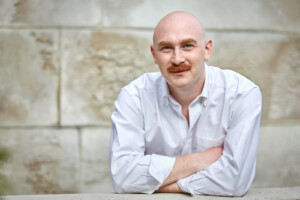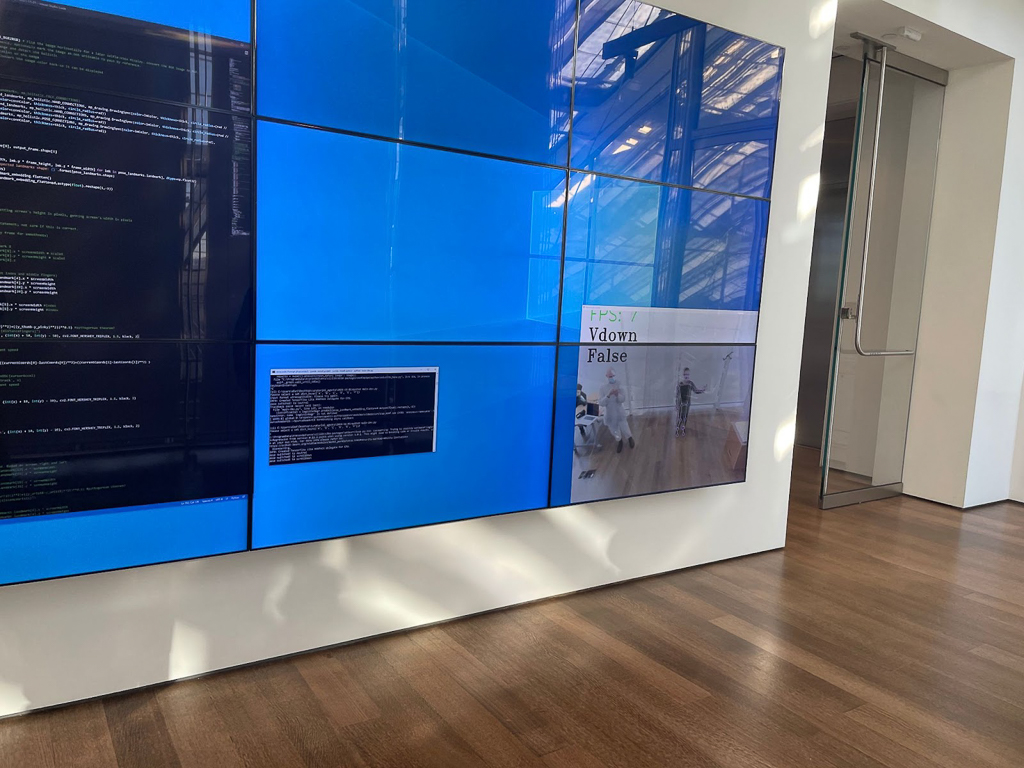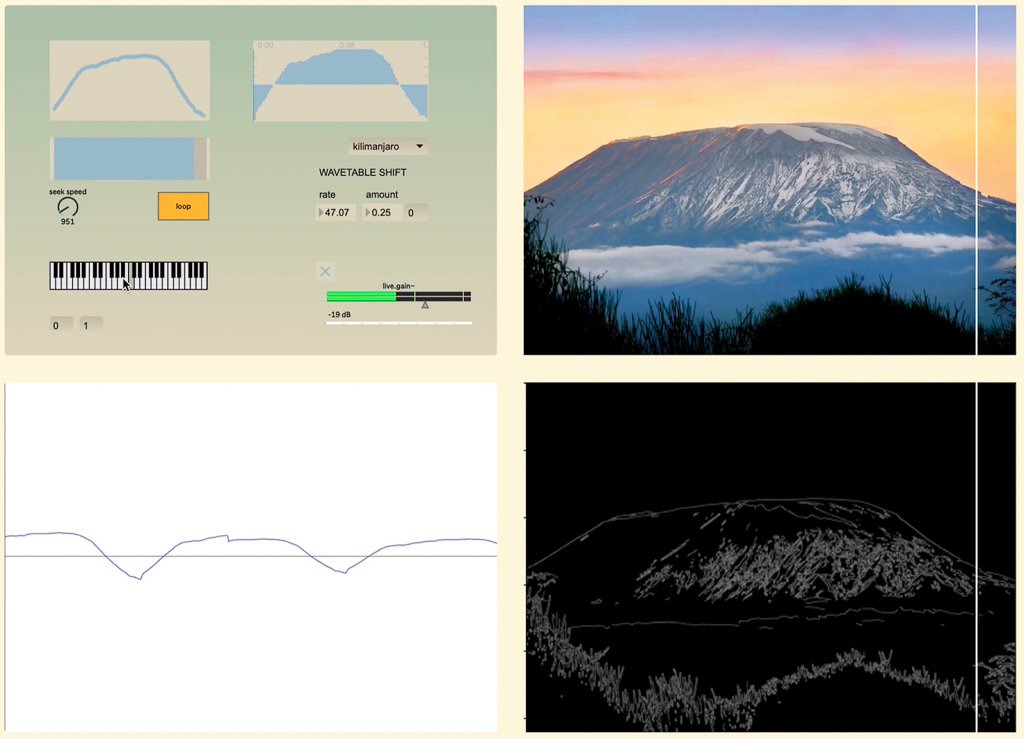
What is it like to be a Master in Design Engineering (MDE) student at the Harvard Graduate School of Design (GSD) and the Harvard John A. Paulson School of Engineering and Applied Sciences? In this conversation, Ian Erickson (MArch I ’24) speaks with Maximilian Mueller (MDE ’22) about his background in neuroscience and music production, taking classes across the university, and working on a forthcoming PlayStation video game.
Ian Erickson: What ideas are most interesting to you right now?
Maximilian Mueller: Lately I’ve been thinking about the ways our mediasphere is moving towards including more deliberately mutable digital works. For instance, an MP3 that constantly evolves based on some latent intent of its author or in response to its context, rather than simply being a static digital file like we are used to.
What were you doing before you came to the MDE program?
My academic background is in neuroscience and my past work ranges from zebrafish teratology to music production, data mining, and behavioral health. Most recently, I’ve been focused on music—writing for commercials, TV, and other artists.
And what led to your decision to attend the MDE program?
I wanted to integrate and formalize disparate interests such that my creative and professional practices could merge in a productive and economically viable way. Harvard University, and specifically the MDE program, which is housed between two separate and exciting schools—the Graduate School of Design and the John A. Paulson School of Engineering and Applied Sciences—seemed like the ideal place to do that.

Can you reflect on how you’ve grown so far through your graduate studies and what you’re looking forward to in the remaining time you have here?
Just being at an institution like this is eye-opening in so many ways. You are exposed to so many new ideas and people; I’m still parsing what it all means! I’m particularly grateful to have met the people at metaLAB—I’m currently working on sonic interface design for their Curatorial A(i)gents project, to be exhibited next year in the Harvard Art Museums’ Lightbox Gallery.
As I near the end of my time here, I’m looking forward to pushing the integration of arts/design/engineering as far as it can go, both through my thesis and through the video game I’m working on.

I’m really excited to hear more about the game!
The game is called Nour: Play With Your Food, out of an indie studio called Terrifying Jellyfish, published by Panic, and out on PlayStation later this year. It’s an art game that explores food aesthetics, culture, and memory through free-form play. It asks whether virtual food can look so good that you can taste it. Can visuals and sound alone evoke the sensation of hunger?
I was initially brought on to do the soundtrack. Coming in, I had no game development experience and I am not much of a gamer, so I didn’t really know what I was getting myself into. Yet, it quickly became apparent to me that a static soundtrack wouldn’t do—it had to be generative and integrated into gameplay mechanics. In this way, the game functions as an instrument that anyone can play: conjure food and make a melody, create a dish and make a song. Gameplay has some immediate and structural sonic consequences; the soundtrack is created in real time, based on the nature of player behavior. Music in Nour acts not just as a soundtrack, but as an interface. Players can exert influence over the scene and its contents in both familiar and new modes of musical gameplay, using rhythm, pitch, and volume as a language of sorts. A lot of thought went into making the sonic interface accessible to a first-time player yet rewarding to someone that’s “mastered” the instrument.
Being invited to write some music spiraled into a heuristic exploration of this incredibly rich medium. My coursework during the first year of MDE prepared me to come into a new discipline cold, use my design thinking skills to imagine something novel in that arena, and apply my growing technical skills to make it happen.

Can you tell me about a favorite course you’ve taken at the GSD?
One of my favorites was an MDE core class called “Integrative Frameworks,” taught by Professor Woodward Yang. I’d describe it as a polymathematics seminar. We did a few hundred pages of reading a week on subjects ranging from universal design to IP law, political economy, and physics. We would then analyze and discuss the modes of thought and the structures supporting the ideas, with the goal of integrating other frameworks.
How is the MDE thesis structured and what are you working on for it?
The MDE capstone or IDEP (Independent Design Engineering Project) is a year-long thesis focused on systems-level interventions. For my IDEP, I developed an aural AR framework that grants people new senses and enables media to react to a user’s context in real time.
Can you speak a little bit about your experiences taking courses outside of the GSD?
Given the dizzying array of wonderful classes at Harvard, it’s a challenge to decide on (and then lobby for) the perfect course. I’ve taken quite a few outside the GSD and would say that generally GSD students’ design perspective is valued highly in non-GSD classrooms. What is second nature in Gund is not elsewhere. The same goes for the perspectives and frameworks of the host schools when their students take courses at the GSD. It’s that collision and integration of frameworks that I love most about my time here.

Editor’s Note: This conversation was conducted in Spring 2022. Maximilian Mueller graduated with the class of 2022.